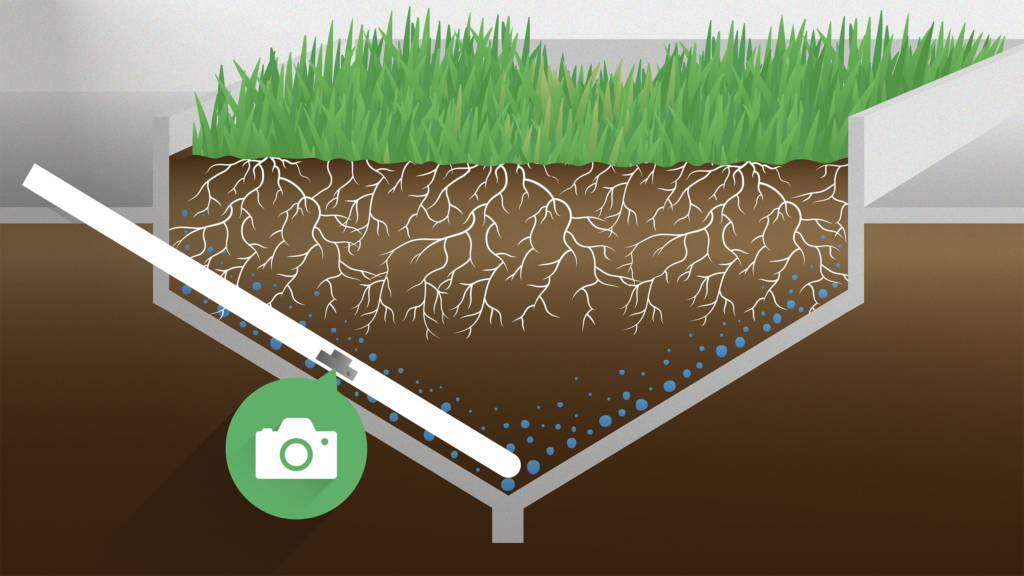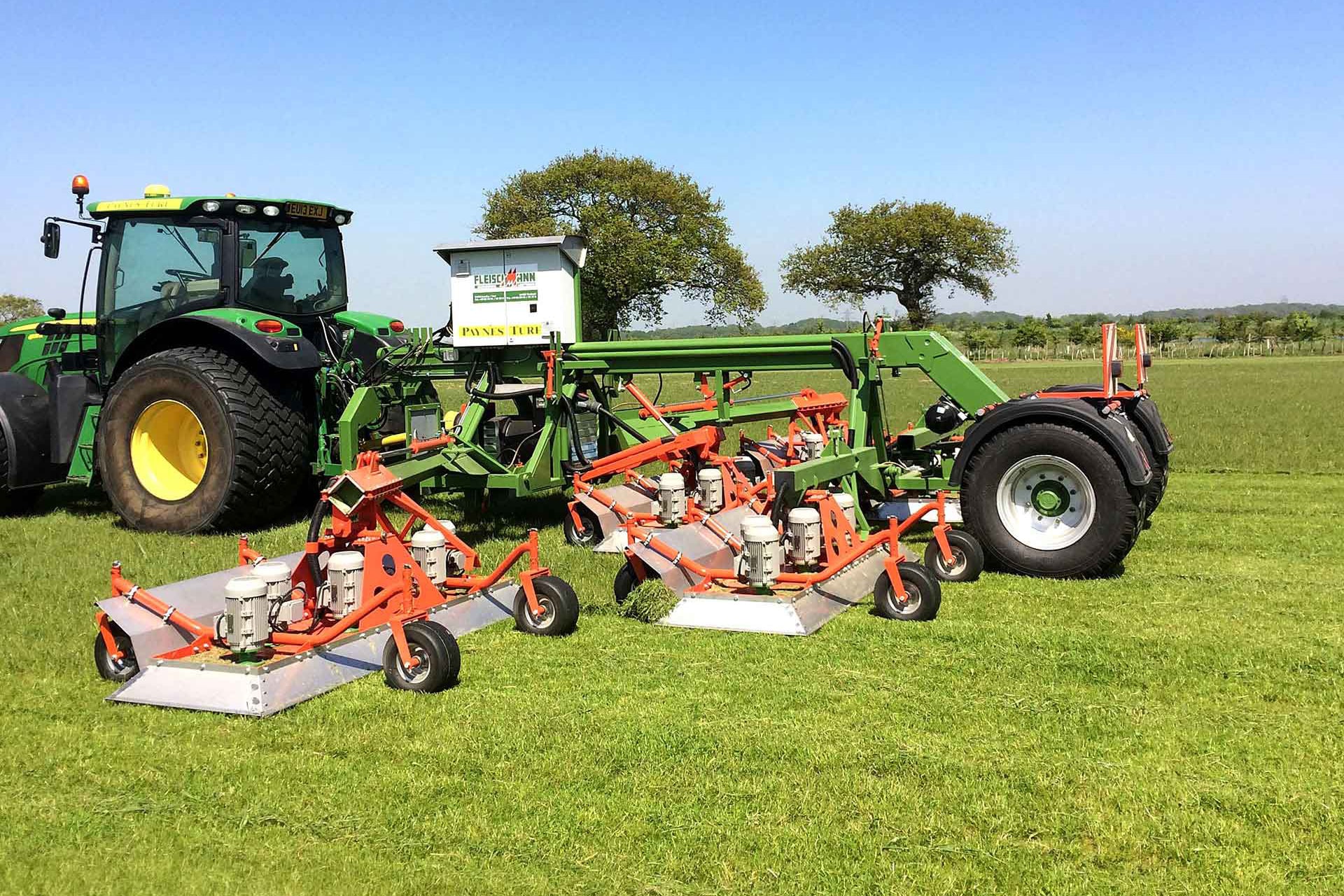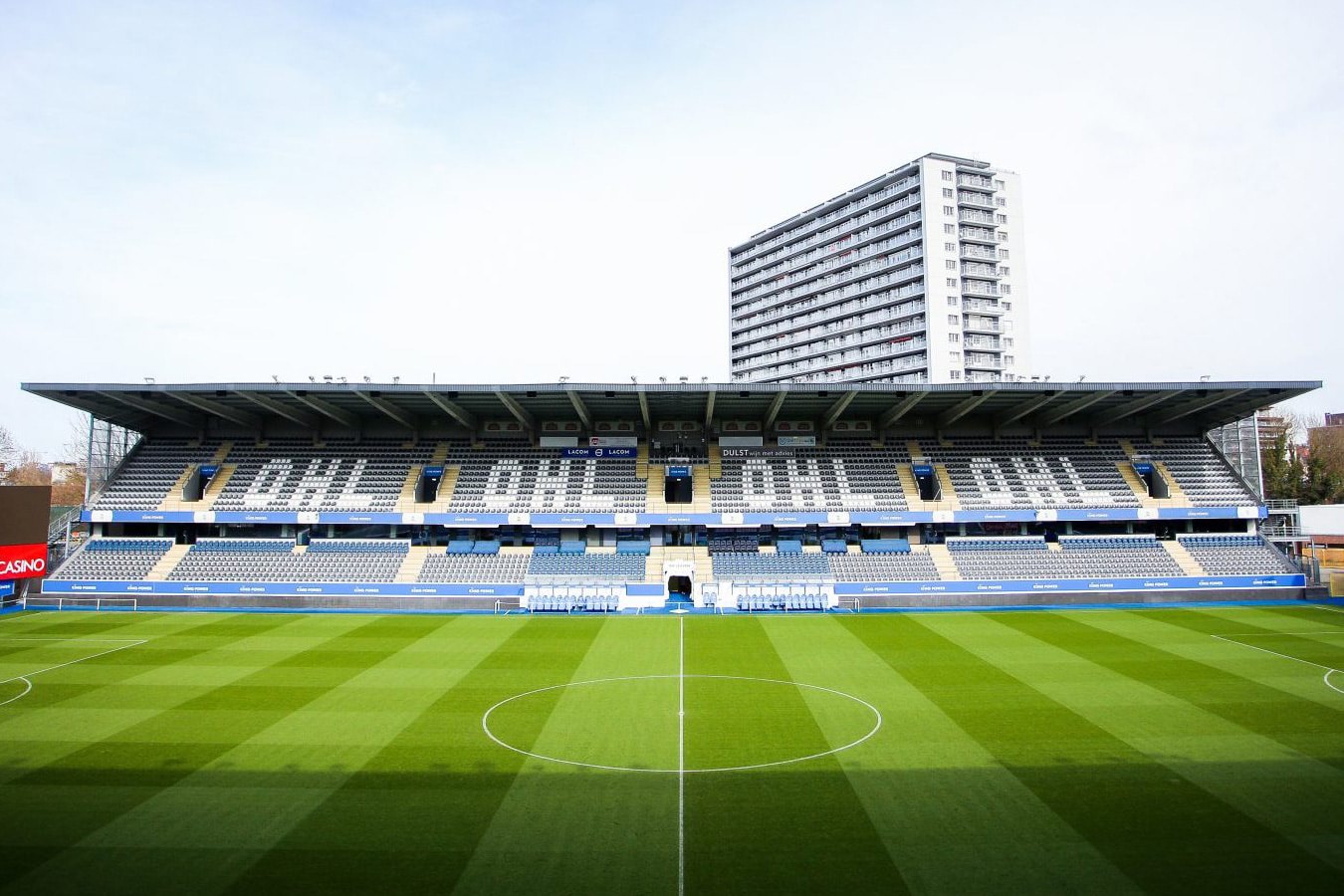
New research: Deep roots combat drought
Plant breeding for improved root architecture is very complicated. It is not easy to look closely at what is happening below the soil surface, nor to do so in the large number of breeding lines needed to make improvements.
At least until recently. Together with the University of Copenhagen, DLF is heavily engaged in examining different grasses for deep root mass using the world's most advanced root research facility called RadiMax. This facility makes it possible to take pictures of roots down to a depth of 3 meters so that one can see how they perform under drought conditions.
Root research in new varieties
"Our breeders get unique information about root architecture and can thus identify and select potential new varieties with the fastest root growth, deepest roots and largest root mass. They have already identified a number of varieties that are the first choice when it comes to drought tolerance," said Christian S. Jensen, Senior Scientist and Head of Biotech at DLF.
"By combining the data from RadiMax with what we already know from our other R&D activities, we can develop new breeding lines to further improve the drought tolerance of our new varieties. Meanwhile, we have been able to verify that the root mass of our forage grass varieties Raaigras PLUS, Rietzwenk PLUS and some recreational grasses show exceptional performance," says Christian S. Jensen.
Currently, deep root mass and root architecture are not rewarded with official grade in the European testing system. But we believe it is essential to market drought-tolerant varieties for the benefit of farmers, sports field managers and consumers
Spring drought - an everyday occurrence
With changing climatic conditions, droughts in spring and early summer are becoming more common. In many cases, this has serious implications for forage and grass performance. The year 2020 was no exception. For the sixth time in a row, northern and central Europe were affected to varying degrees by drought in spring and early summer. In all these years, drought had economic consequences for producers of forage grasses and managers of grass fields. Crops sown this year became exposed and struggled to germinate. Crops already in place suffered from the drought precisely during the growing season. The consequences for sports fields were a poor appearance, more repairs and fewer playing hours.
The facts can no longer be ignored. We had better get used to the likelihood that spring and summer droughts will be the rule rather than the exception!
So, when a farmer or a sports field manager asks for drought-tolerant varieties and species in the bag of grass seed, DLF can supply them -. verified by RadiMax.



